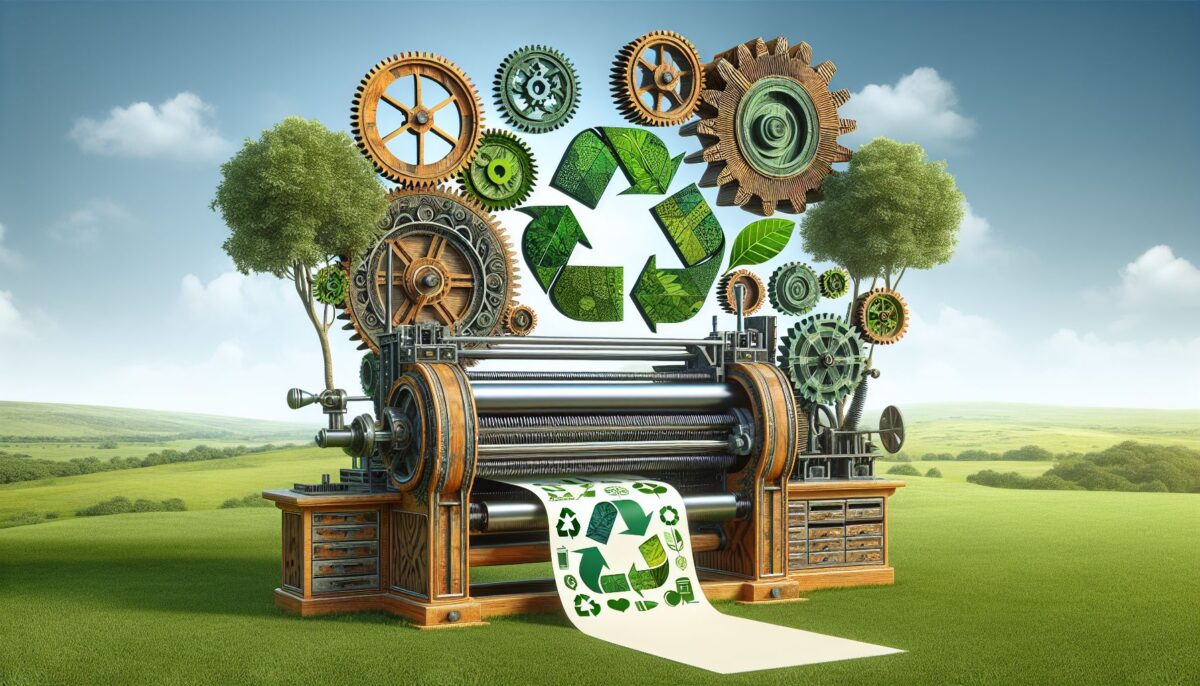In recent years, there has been a growing emphasis on the importance of sustainability in various industries, including printing. As the world becomes more environmentally conscious, businesses are increasingly looking for ways to reduce their carbon footprint and minimize their impact on the planet. In the printing industry, this has led to a number of innovations and best practices aimed at making printing processes more sustainable.
Introduction to Sustainable Printing
Printing is a crucial part of many businesses, from marketing materials and packaging to reports and documents. However, traditional printing methods can have a negative impact on the environment. The paper industry, in particular, has been criticized for its reliance on wood pulp from old-growth forests and its high energy consumption. In addition, the inks and chemicals used in printing can be harmful to both human health and the environment.
Sustainable printing is an approach to printing that seeks to minimize these negative impacts by using environmentally friendly materials and processes. This can involve using recycled or FSC-certified paper, vegetable-based inks, and energy-efficient printing equipment. By making these changes, businesses can reduce their carbon footprint and demonstrate their commitment to corporate social responsibility.
Benefits of Sustainable Printing
There are many benefits to adopting sustainable printing practices. For one, it can help businesses save money in the long run. By using recycled paper and energy-efficient equipment, companies can lower their operating costs and reduce their waste disposal fees. In addition, customers are increasingly looking for environmentally friendly products and services, so sustainable printing can help businesses attract new customers and retain existing ones.
Sustainable printing also has a positive impact on the environment. By using recycled materials and reducing energy consumption, businesses can help reduce deforestation, water pollution, and greenhouse gas emissions. This can help protect ecosystems, preserve natural resources, and mitigate the effects of climate change. In short, sustainable printing is good for business and good for the planet.
Best Practices for Sustainable Printing
There are several best practices that businesses can follow to make their printing processes more sustainable. One of the most important steps is to use recycled or FSC-certified paper. Recycled paper is made from post-consumer waste and requires less energy and water to produce than virgin paper. FSC-certified paper comes from responsibly managed forests and helps protect biodiversity and indigenous communities.
Another key practice is to use vegetable-based inks instead of traditional petroleum-based inks. Vegetable-based inks are made from renewable resources and do not contain harmful chemicals like volatile organic compounds (VOCs). They also tend to have a lower carbon footprint than petroleum-based inks. In addition, businesses can invest in energy-efficient printing equipment, such as digital printers and LED UV curing systems, to reduce their energy consumption and greenhouse gas emissions.
Businesses can also reduce their paper usage by adopting digital solutions, such as electronic invoicing and online document sharing. This not only saves paper but also reduces the need for printing and transportation. Furthermore, businesses can work with sustainable printers that have environmental certifications, such as ISO 14001 or Green Seal, to ensure that their printing processes meet the highest environmental standards.
Conclusion
Sustainability in printing is no longer just a trend – it is a necessity. As the effects of climate change become more apparent and consumers become more environmentally conscious, businesses must prioritize sustainability in all aspects of their operations, including printing. By adopting sustainable printing practices, businesses can reduce their environmental impact, save money, attract customers, and contribute to a healthier planet for future generations. Sustainable printing is not just good for business – it is essential for the long-term viability of our planet.

